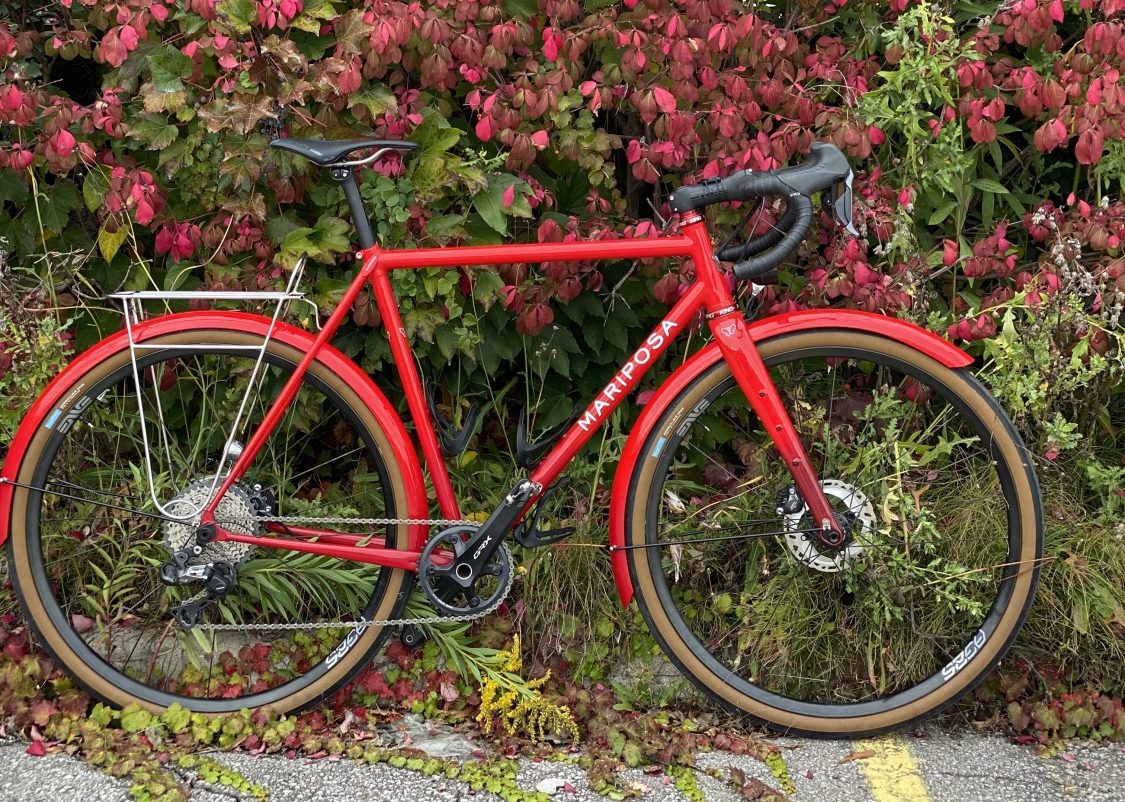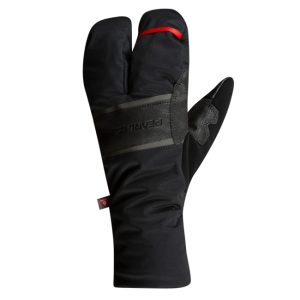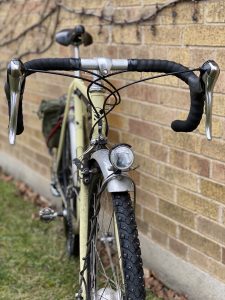
Winter riding can be a great adventure, a lot of fun and a whole lot better than riding the trainer if you are well prepared. Without the proper gear it’ll be a miserable icy slog.
When pairing proper clothing with a bike fitted with fenders, there are few weather conditions that can make a ride unpleasant. Protecting the wheels from spraying water, or ice, keeps your clothing dry, and they prevent road grit from turning Lycra into sandpaper. Gone is the spray off of the front wheel that drenches feet with the freezing plume of water. And on a club ride, everybody is more comfortable without a constant wheel-spray showering their face. While riding in the rain and slush, the majority of the water comes off of the wheels, not from the sky, so fenders are the first trick to staying comfortable.
Generally, we recommend riding a fender bike once the snow flies and the salt trucks hit the streets in late fall. In our experience, riding in cold, wet clothes on a winter day is not tolerable beyond about 60 minutes. Staying dry with fenders allows us to stay out on the bike indefinitely.
A Mariposa fitted with Honjo fenders.
The size and fit of your fenders are important. The fenders should cover as much of the tire as possible from end to end and they should be wider than the tires. This allows clearance so snow, ice or mud don’t build up between your tire and fender. In an ideal world, all front and back fenders would have a flap. These flaps are custom fitted pieces of flexible material (leather or synthetic leather) bolted to the lowest part of your front fender and the lowest part of your back fender at the furthest point on your bike. The front flap position offers your feet additional protection from ground spray generated by your front wheel. The back flap position keeps water from spraying on the riders in your slipstream. On a rainy day, you may be celebrated as the club’s favorite member with the presence of this back fender flap or the club’s most despised, if you have no fenders at all!
Once the road spray is eliminated with a proper set of well installed fenders, a cyclist with a good rain jacket can stay quite dry for the duration of any ride. The Mariposa X Bioracer Rain Jacket is foldable, lightweight, water repellent and windproof rain jacket with a low back and an aerodynamic cut so that it does not flap around in the wind. On cold winter days the Castelli x Mariposa Goretex thermal jacket is ideal for staying warm and dry.
Winter footwear and warm gloves are the next essentials. We’ve learned over the years, mostly through hard lessons, that these are two of the most crucial aspects to winter riding comfort and are intimately linked. Well insulated, Winter specific thermal boots are a must. We prefer MTB (SPD cleat compatible) winter boots with MTB (SPD cleat compatible) pedals for on and off-road winter riding. The walkability is great for getting over the occasional snowbank not to mention the ease of clipping into the dual sided pedals in icy conditions.
A quick tip about your cleats and pedals: lube your cleats and pedals in the winter on a regular basis (once per week or whenever you lube your chain). Ice will not stick to the lube helping you to avoid the frustration of ice inhibiting your ability to clip in.
Since maximum blood flow to the feet is required to warm your toes in the winter, it is always best to purchase a one-size-larger winter cycling shoe. This allows for a looser fit which optimizes circulation. At all costs, avoid the temptation to stuff the extra space with a super thick sock. The tighter the fit of your shoes, the colder your feet will be. Instead, opt for a medium weight, wool winter sock that allows you space to move your toes freely. If your toes do get quite cold, be sure to warm them slowly! Warming cold appendages quickly can damage your tissues and further impair circulation.
If thermal winter boots are not an option, make sure you cover the shoe vent holes with duck tape to cut down on any water or cold air coming in the shoe. It’s a simple trick that can make a significant difference. Also, cover your shoes with thermal shoe covers or “booties”, as they cut down on wind chill and further insulate your winter cycling shoes. A good set of booties will allow you to ride to -20 comfortably, whereas without it’s hard to tolerate 0 degrees. For a person who loves to ride, this can mean the difference between a spin around the block or 3-4 hours of training.
As for your hands, it is ideal to wear mitts with a Goretex outer shell, rather than gloves when it is below < 0 Celcius. If your fingers are together, they will stay warmer.
The Pearlizumi Amfib gloves keep your fingers together.
Layering clothing when you ride in the winter is ideal so you can cool off when warm and avoid getting chilled from sweat. A thermal cap under you helmet, it will protect your ears from the wind and one with a small peak will help keep the snow or rain out of your eyes. Also, cover your neck with a thin scarf or bandana to cut down the windchill and pull up over your face when the wind bites. Applying Vasoline on your face will also help to protect it from the icy cold wind. Packing Hotshots in your back pocket to put in your shoes or gloves when your fingers and/or toes get cold is a great idea. Electric socks and gloves are now on the market as well, which are ideal for those out all day in the cold.
With short days, less sun and low sun angle, visibility can be an issue in the winter months. We recommend always riding with front and rear lights, as there is less daylight in the winter months. This will allow you to see better and be SEEN by cars, trucks and other vehicles. We have several light options available including lights that pair with your Garmin head unit and have a rearview radar that emits a warning and have a built in camera to record video of cars and traffic situations.
Like lights, winters tires improve safety. There are several good options depending on the severity of the conditions. The Schwalbe Marathon Winter Plus Tires with ice spikes will give provide grip even on sheet ice. The Continental Top Contact Winter tires are designed to provide more traction and stability in slick adverse conditions.
Studded winter tires give you extra grip in the snow and ice, while hub generated dynamo lights allow you to be seen, and to see, on the darker low light winter days. This winter commuter, which was built several years ago in the Mariposa workshop, was designed to accept 700C x 35mm Schwalbe Marathon Plus Winter spiked tires, fenders, front and rear fender flaps, a small carrier for his lunch, a frame pump, hub generated dynamo lights and full size Honjo Alloy fenders.
Another important aspect of keeping dry is preserving your bike. Road salt and water can erode bike parts over time. Constant cleaning is a must without mudguards, which is difficult for most of us to commit to in the winter months. Not only do mudguards keep our bodies warm and dry, but the bike also stays much cleaner. Clean, dry bikes need less maintenance. We also recommend applying a “rust proofing” treatment annually inside steel tube frames.
With these few tips, we hope you enjoy a few (or many) comfortable winter rides. Keep warm, keep cozy and keep fit, even if it is -10C outside!




